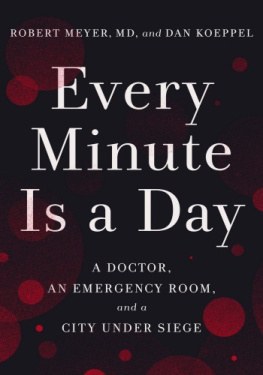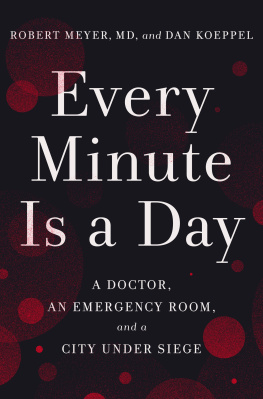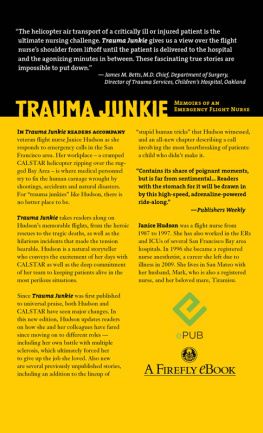Trauma Room Two
Trauma Room Two
______
Philip Allen Green
Copyright 2015 Philip Allen Green
All rights reserved.
ISBN: 1511900024
ISBN 13: 9781511900027
For my family
These stories are fiction. I made them up. They are based on real experiences I have had working as a physician, but the characters, the specifics, even a few of the medical practices in the story are fiction, intentionally chosen for their narrative power. Any resemblance to people, living or dead, real or otherwise, is coincidental and unintentional.
No part of this book may be reproduced without written permission from the author.
Questions or Comments:
Table of Contents
Mistakes
Sometimes when I am bored, when it is all sore throats and dental pains, when I feel more like I am a social worker and a hand-holder than an emergency medicine physician, I play a game.
I do not look at the chart before I go into a room. I walk in cold. I enter with no idea who is going to be in there or why. In that very first second, before anyone speaks, I try to guess what the story is, who the people in the room are, and why they are in my emergency room.
Heremaybe it would make more sense if I showed you.
I draw back the curtain and step into Trauma Room Two. My eyes scan quickly about, gathering as much information as they can.
There are three people in the room.
For a brief second, I intentionally do not look at the patient lying on the hospital bed, not yet. Two people accompany the patient, a man and a woman. The man sits on a hard plastic chair pushed back against the rooms wall, staring quietly ahead. I start with him. I know if I can just look closely enough, the story is there.
I study him. He is in his late forties. He wears a jet-black business suit. The fine fabric lies starkly against a bright, white, collared dress shirt. The dress shirt is pressed and starched and clean. He shifts slightly in the chair, and the red silk tie around his neck catches the light just so, drawing my eye to it. Small square gold icons fill the tie in an exact and set pattern. The knot at the top is tied with perfect precision and symmetry. This means something. I look more closely.
On his left wrist, he wears a Rolex. The bands are polished silver and cradle an oyster-white face on which three hands mark the time, the smallest of which ticks along, second by second by second. The outside of the watch face is meticulously trimmed in gold and clearly asserts to all who see it that this mans time is expensive.
As I observe, he moves his wrist a fraction of an inch, and the whole thing explodes into shimmers, sparkling magnificently from just the weak fluorescent lights overhead. It dawns on me that his watch alone costs more than the car I drove to work this morning. I cannot help but think, This man is nothing like me.
I have learned I have to be careful with people like him. A single misstep in our interaction can easily result in a long string of complaint letters. But it is OK. I have done this enough that it does not frighten me or anger me or even annoy me. It is just a dance I have to be conscious of in this room. I make a mental note to be careful, and then continue my study.
Atop his head sits black hair with just a dusting of silverexecutive hair, I believe it is called. It is thick and full and glowing with virility. Every strand is carefully combed into place. His hair shines nearly as brightly as his watch.
He lifts his head just slightly to look at me, and I notice a tiny cluster of hair is out of place. Just above and behind his left ear, the small bunch breaks from the linear strands around it, twisting up in disarray. It is not much, but it is there. On a man like him, it is nothing and everything at the same time.
Something is wrong.
His face is clean-shaven, the skin healthy and bright. Two black, sharp, crisp Italian eyebrows sit above pale blue, intelligent eyes that read me in a glance, as quickly as I read him. A strong jaw cuts the angle of his face into the space of the room around it. He does not need to smile for me to know his teeth will be perfect and symmetrical and white.
Under each eye hangs a faint dark circle. He has not been sleeping well. I am guessing, of course, but it looks to be more than just work fatigue. Perhaps a struggle outside of work has started to spill over into what must be an all-consuming drive for achievement. Or perhaps it is nothing other than the tracks left on him from another successful merger. I cannot tellnot yet.
It is strange to see someone like him here, even if he is just accompanying the patient. I am an ER doctor in a small emergency room, in a small hospital, in a small town, in the middle of nowhere. I cant help but wonder how a man like him ends up in an ER out here so far from the city. He does not have the look of someone who has come to hunt or fish, and he is definitely no wheat farmer. But something has pulled him here from far away, something that could not wait. I look closer.
The lines, curves, and circles of his face come together into an expression that is hard, at first, for me to read. I can sense he is a master at controlling what his face reveals. But my job is to read faces and bodies as well as he reads the stock market. In the curve of his mouth, I read frustration. In the angle of his brow, I read anger. In the tilt of his head, I read even a trace of fear.
But there is something elsesomething he does not want anyone to see. He hides it so well, after so much practice and time, I almost miss it. In fact, I am sure I would have missed it when I first started out, 41,422 patients ago. But that was then.
There, like a single, delicate, fleeting strand woven through a cloth of steel, is a tenderness and a sadness. What it is doing inside a man like himI cannot comprehend. I can see why he wants tono, why he has tohide it in his world. He works to obscure it in the glint of his eyes and the shine of what must be a string of brutal successes. But still it is there.
Now that I see it, I see it clearly. It has blindsided him like a flash flood in the spring, sweeping him off his feet and tossing him down a canyon from which he cannot escape. He is drowning in this maelstrom of sadness, and no amount of money, power, or rage against the universe can make it abate.
An empty chair sits next to him.
One chair over is a woman.
She is slightly younger than the man.
I cannot see her face; her body is turned partially away from me.
She is resting her elbows on her knees, looking at the screen of her phone. She cradles it lovingly like a newborn. Marvelous red nails stand out against a white-and-gold iPhone. Her fingers are long and elegant like those of a famous pianist or a brain surgeon. She taps and slides the icons on the screen with elegance, as if they are servants being sent to do her bidding.
Her forearms are bare and hairless, but it is her biceps that stand out. They are small, solid, and precise, like an exclamation point stamped onto each upper arm. Biceps like that shout yoga, Pilates, personal trainers, green smoothies, and a lock on the bathroom door after big holiday meals.
Long brown hair is pulled back into a ponytail that falls gracefully to the middle of her back. A small silver clasp studded with diamonds traps the hair behind her head, holding it in place. It out-shimmers even the mans Rolex.
She wears a light gold, silk shirt. There is a cutout in the top back of it. I can just barely see her upper spine under the skin. Each vertebra makes a small bump in the arch of her lower neck, and each one is the exact same distance from the one above and below it. There are no outliers, no overly large or overly small bones. Each rise in her skin is exactly the same size and distance from the other. Before this moment, I did not realize bones in a back could be so flawless.
Next page











